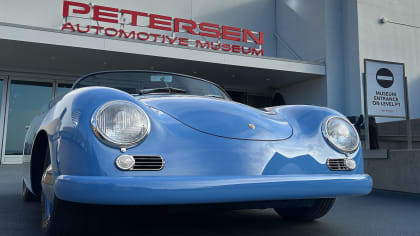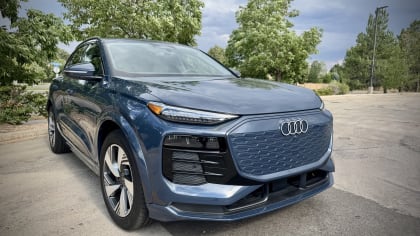2011 MITSUBISHI LANCER EVO MR REVIEW
Don't Change Your Evo Ways
This article is from our archives and has not been updated and integrated with our "new" site yet... Even so, it's still awesome - so keep reading!
Published on Mon, Sep 5, 2011
By: The LACar Editorial Staff
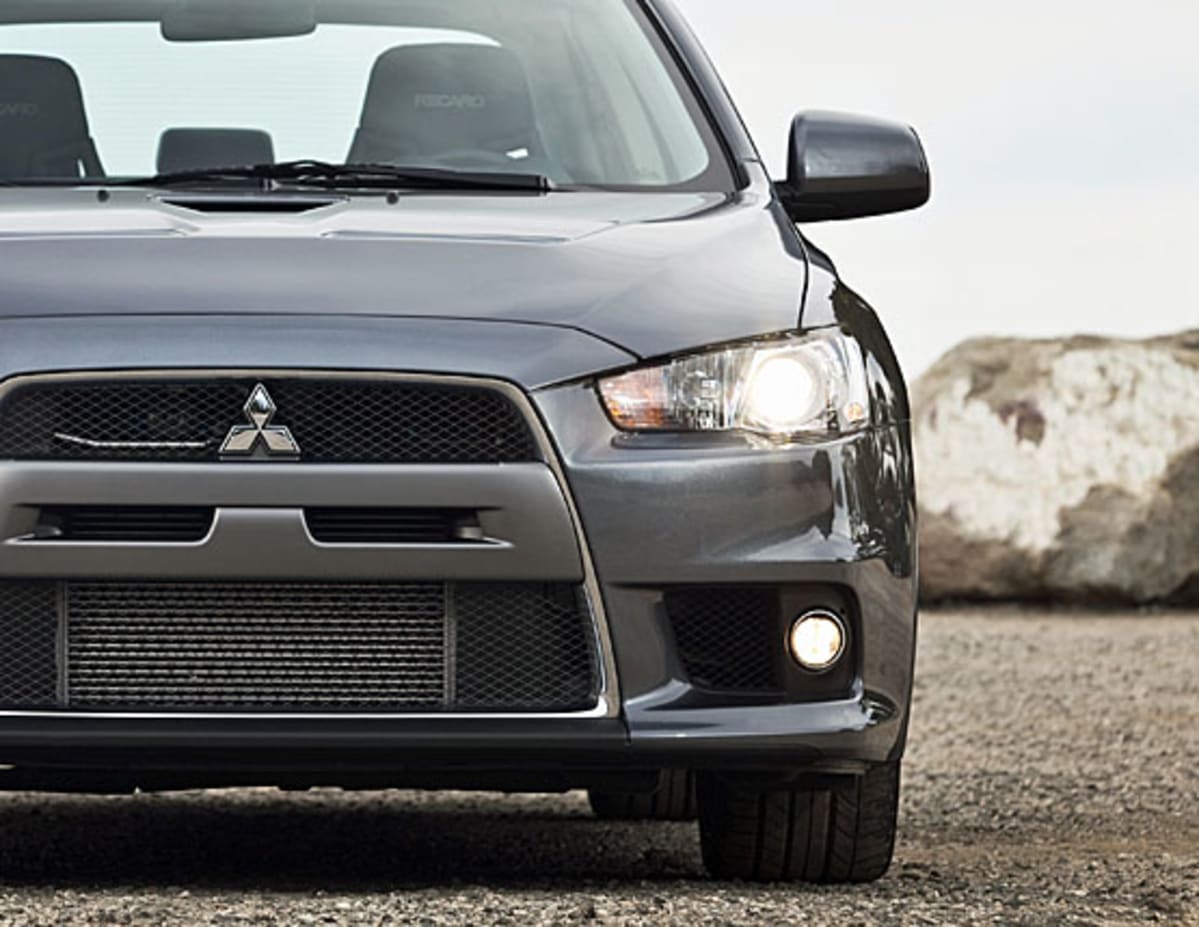
By Roy Nakano
In 2025, when corporate average fuel economy reaches 54.5 miles per gallon, historians will look back upon the current generation Mitsubishi Lancer Evolution MR (a/k/a, the Evo) as the pinnacle of a certain variant of 21st century high performance motoring. Take a good look, because this may be the last time you see a machine like this. Rumors are rampant that the next version of the Mitsubishi Evolution will be a hybrid. If that’s the case, they may need to make this one an early entry for the Japanese Classic Car Show.

The Evo already had a reputation that literally preceded its appearance. Thanks to video games like The Need for Speed, this is the car that had a following before the first one was even sold in this country. The current generation Evo has been out for a few years now (see LA Car’s review, REVOLVER), but the car still turns heads—particularly among the Generation Y crowd.
This year, the Mitsubishi Lancer Evolution now boasts an expanded standard equipment package. The exhaust system has been revised for an improved, more sporty-sounding exhaust note. The deep rumble is rarely heard in cars powered by four-cylinders, and the new Evo has one of best we’ve ever heard.
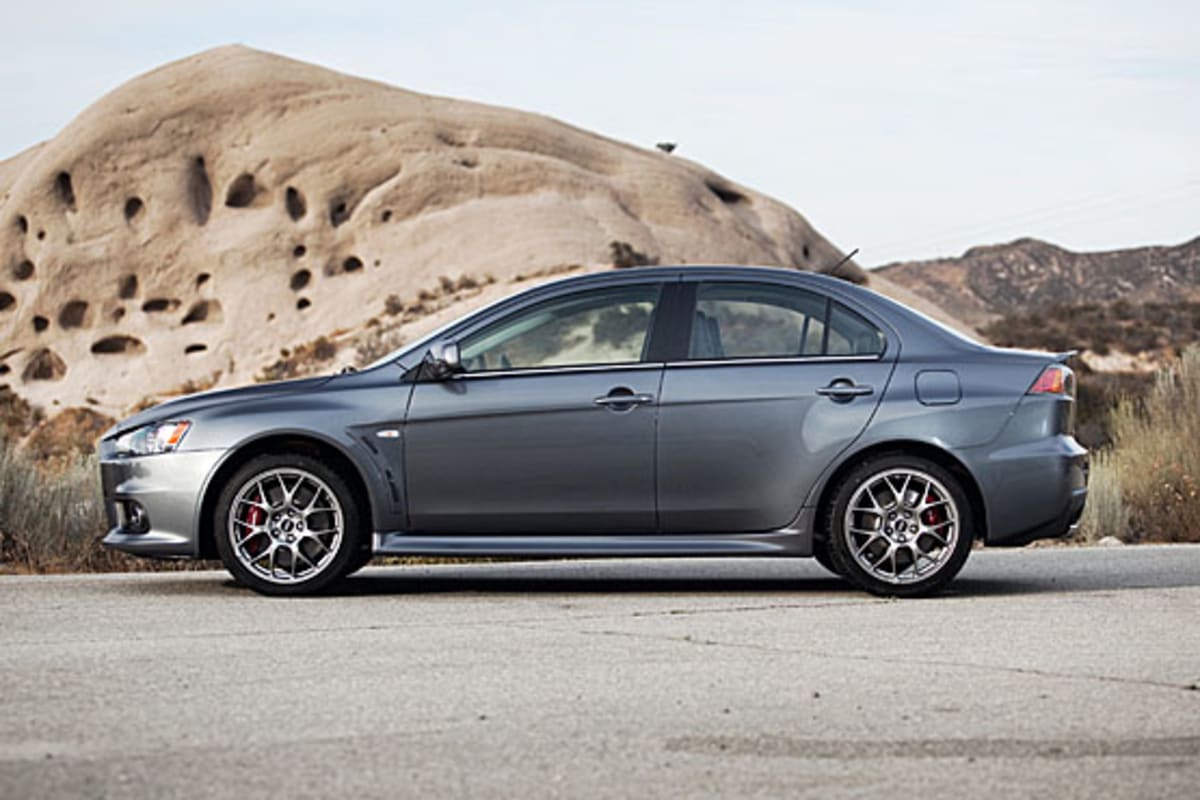
Vehicles equipped with the available 40GB touch-screen HDD-based navigation system now benefit from real-time traffic information to help drivers avoid congested roadways. A USB auxiliary input port has been added. But the icing on the cake is the inclusion of Mitsubishi's FUSE HandsFree Link System™ that allows hands-free calls on your Bluetooth®-enabled cell phone, play your favorite songs by genre, artist, album or playlist on your iPod ®, and access a USB drive by simple voice commands.
The Lancer Evolution is still powered by the conservatively rated 291 horsepower 2.0-liter DOHC turbocharged and intercooled four-cylinder engine. Known among techies as the 4B11 T/C, this powerplant is based on a reinforced cast-aluminum cylinder block and head and features Mitsubishi’s MIVEC variable valve timing for both the intake and exhaust camshafts. The engine's stainless steel exhaust manifold has been positioned toward the back of the engine next to the firewall in an incremental effort to improve the vehicle's overall weight balance.

As with previous Evos, Mitsubishi engineers have endowed the latest version with an incredible level of road-hugging grip for exceptional agility. The newest generation Evo’s active electronic driver aids include Super-All Wheel Control (S-AWC), 4-wheel-drive Active Center Differential (ACD) and an Active Yaw Control (AYC) rear differential, a helical gear-type limited-slipped front differential, Active Stability Control (ASC) and Sport ABS brakes with Electronic Brake-force Distribution (EBD), along with tarmac-grabbing Yokohama ADVAN asymmetrical performance tires.
There are two Evos from Mitsubishi, and the lesser of the two is the GSR, which features a five-speed manual transmission, the requisite large rear spoiler, RECARO® front bucket sport seats, 18-inch Enkei® alloy wheels with 245/40R18 low-profile Yokohama ADVAN tires, Brembo brakes, a rear diffuser, law-restriction dual exhausts, and aluminum roof, hood and fenders to help reduce weight.
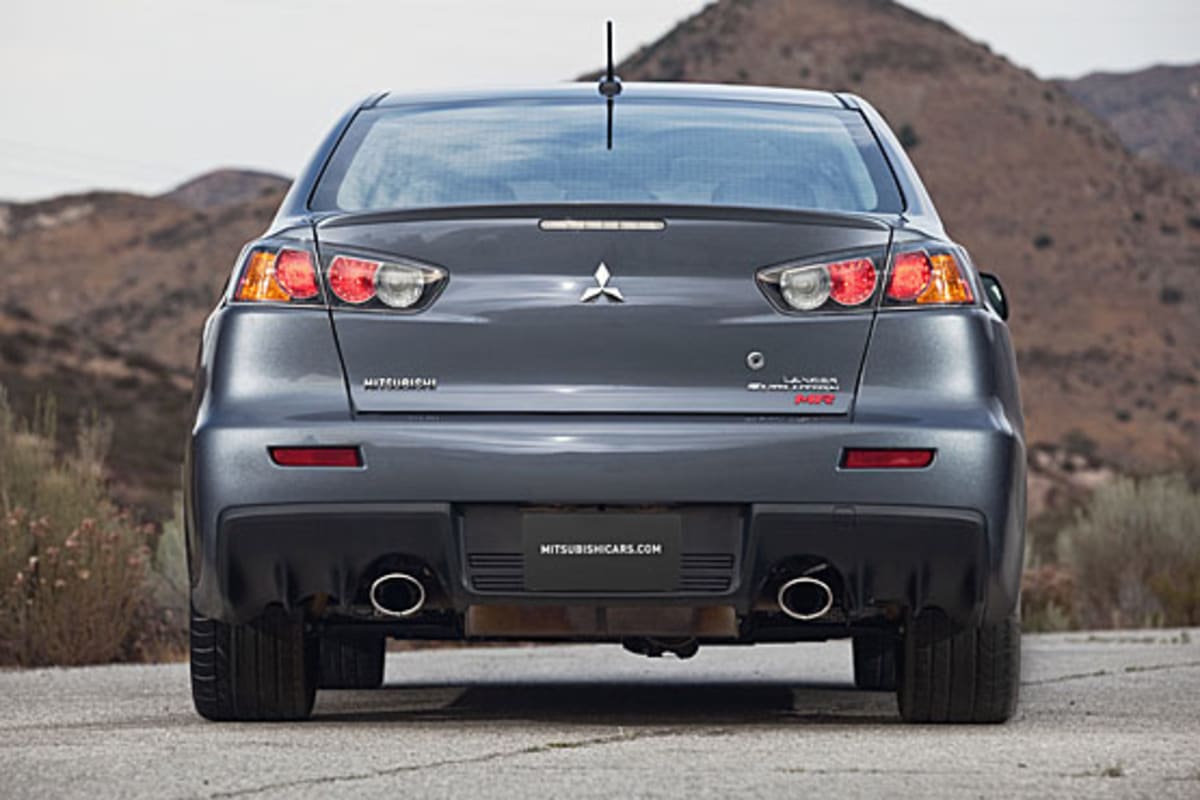
The great of the two Evos is the test car at hand—the Lancer Evolution MR. The latest MR adds Mitsubishi's ultra-quick-shifting 6-speed Twin-Clutch Sportronic Shift Transmission (TC-SST) that allows the driver to toggle rapidly through the gears via magnesium-alloy steering wheel paddle shifters. Other enhancements over the GSR include an even more upgraded suspension featuring Bilstein® shock absorbers and Eibach® springs, two-piece Brembo® front brake rotors, a new lip spoiler (replaces the boy racer wing), BBS® forged alloy wheels and xenon HID headlamps.
The Evo MR works remarkably well in every day driving around the streets of Los Angeles. With the transmission in Normal mode, the drivability exceeds our expectations for a car known for its ultra-high performance personality. Acceleration is linear, without the lag one might expect from a 2.0 liter four cylinder engine that’s been turbocharged to the max.

In Sport mode, the Evo acts more like the import tuner we all know and love, which means the shifts are quicker and the shift points are higher in the RPM range. But wait, there’s more—an S-Sport mode. The owner’s manual tells you the procedure you must use to access S-Sport, as it’s not intuitive. Then it warns, “recommended for track use only.” Yeah, right. we wonder how many buyers heed that warning, as it does maximize the fun factor in the MR, providing the quickest shifts and highest shift points. In either Sport or S-Sport mode, gas mileage suffers—greatly. If that’s a concern, keep the car in Normal mode for most driving situations, and consider the others in an “as needed” basis.
And then there’s Launch Control—a feature only available in S-Sport mode. Lunch Control is a feature first seen on some German high performance machines equipped with dual-clutch automatic transmissions (such as the Evo MR). It essentially allows one to rev the car up to, say 5,000 RPM, and then “drop the clutch” to maximize acceleration from a standing start. This feature is so taboo that Mitsubishi doesn’t even mention it in the owner’s manual. Step-by-step procedures are explained on the Evo online bulletin boards, if you care to pursue it. That the feature comes standard in the Evo MR is so fitting for the Evo’s persona. Bravo, Mitsubishi.

So, after seven days with the Lancer, we return the car to the press fleet and say goodbye what may be the last of its kind. Even the stares we got from passers-by had that same sense of lament, as if to say “there goes a dying breed.” But in the case of the Mitsubishi Lancer Evolution MR, this is a car that will die hard—and as our friends in New Hampshire say: Live free or die hard.
SUMMARY JUDGMENT:
A living legend you can buy brand new.
For more information on the Mitsubishi line, go to mitsubishicars.com
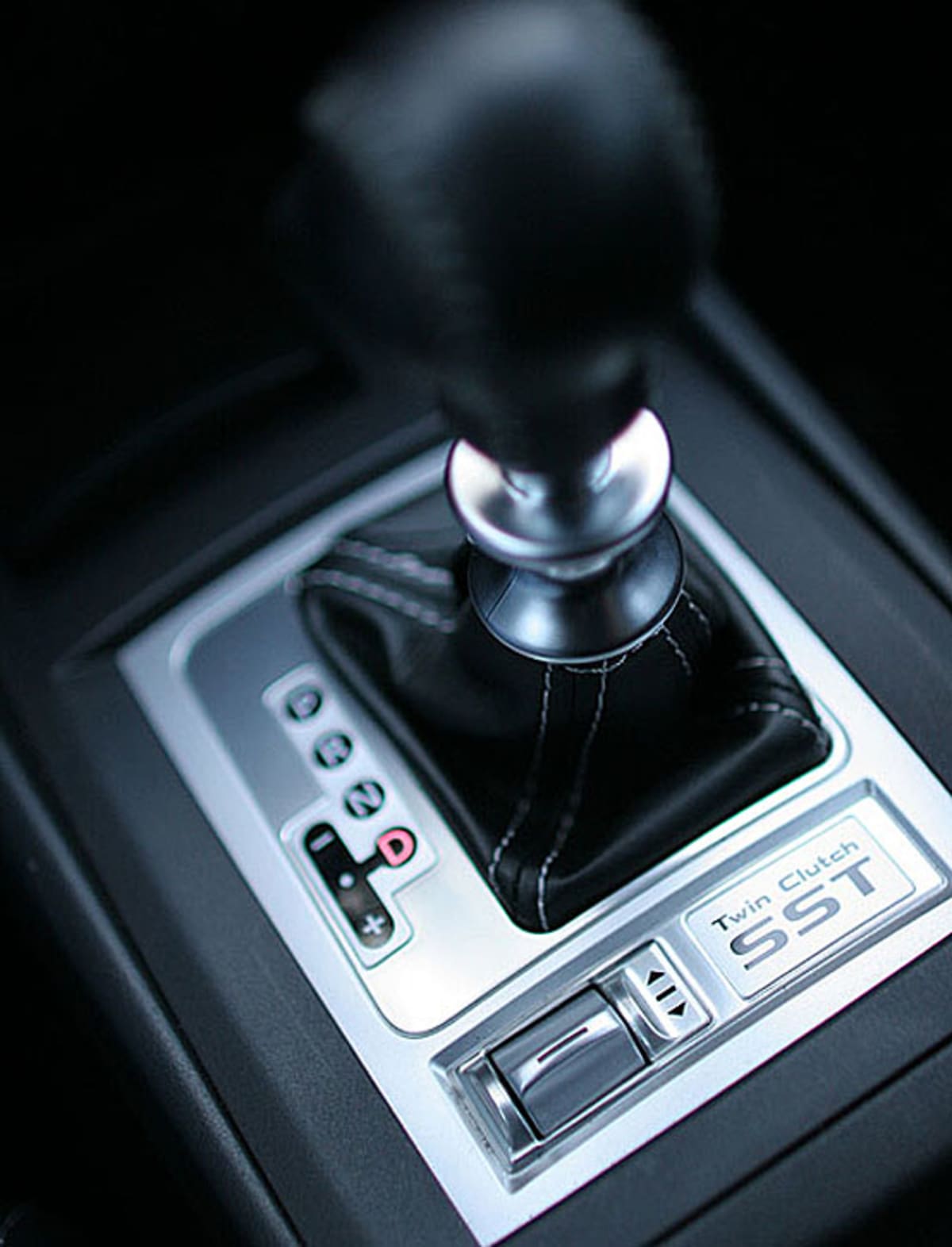
SPECIFICATIONS Name of car: 2011 Mitsubishi Lancer Evolution MR Price: $34,095 (base) $37,295 (MR) $41,735 (as tested) EPA fuel economy rating (miles per gallon): 17 city/22 highway Engine: 4B11 T/C 2.0L MIVEC I4 turbocharged/intercooled, DOHC 16-valve, Mitsubishi Innovative Valve-timing Electronic Control system (MIVEC) aluminum with multi-point injection Horsepower @ RPM (BHP): 291 @ 6500 Torque @ RPM (lb-ft.): 300 lb.-ft. @ 4400 Transmission: Six-speed Twin-Clutch Sportronic Shift Transmission (TC-SST) automatic with sequential manual sport and super sport modes and available launch control Drive configuration: All-wheel drive Steering: Hydraulic power-assisted rack-and-pinion Suspension: Front MacPherson strut (inverted strut) with forged aluminum control arms, Eibach springs and Bilstein shock absorbers, front stabilizer bar (25 mm) Rear Multi-link with forged aluminum control arms, Eibach springs and Bilstein shock absorbers, rear stabilizer bar (23 mm) Brakes: Front ventilated 13.8 inch disc with 4-piston caliper, two-piece rotor for weight reduction Rear 13-inch ventilated disc with 2-piston caliper Anti-lock brake system: 4 sensor, 4 channel Sports ABS with EBD Wheels and tires Wheel type: BBS® forged aluminum alloy Wheel size: 18 x 8.5 in. 5JJ Tire type: Yokohama ADVAN asymmetrical performance tread P245/40R18 93Y Dimensions Length: 177 inches Width: 71.3 inches Height: 58.3 inches Curb Weight (lbs./kg): 3594/ 1630 Performance 0-60 mph: 5.3 seconds Quarter-mile elapsed time: 13.9 seconds

